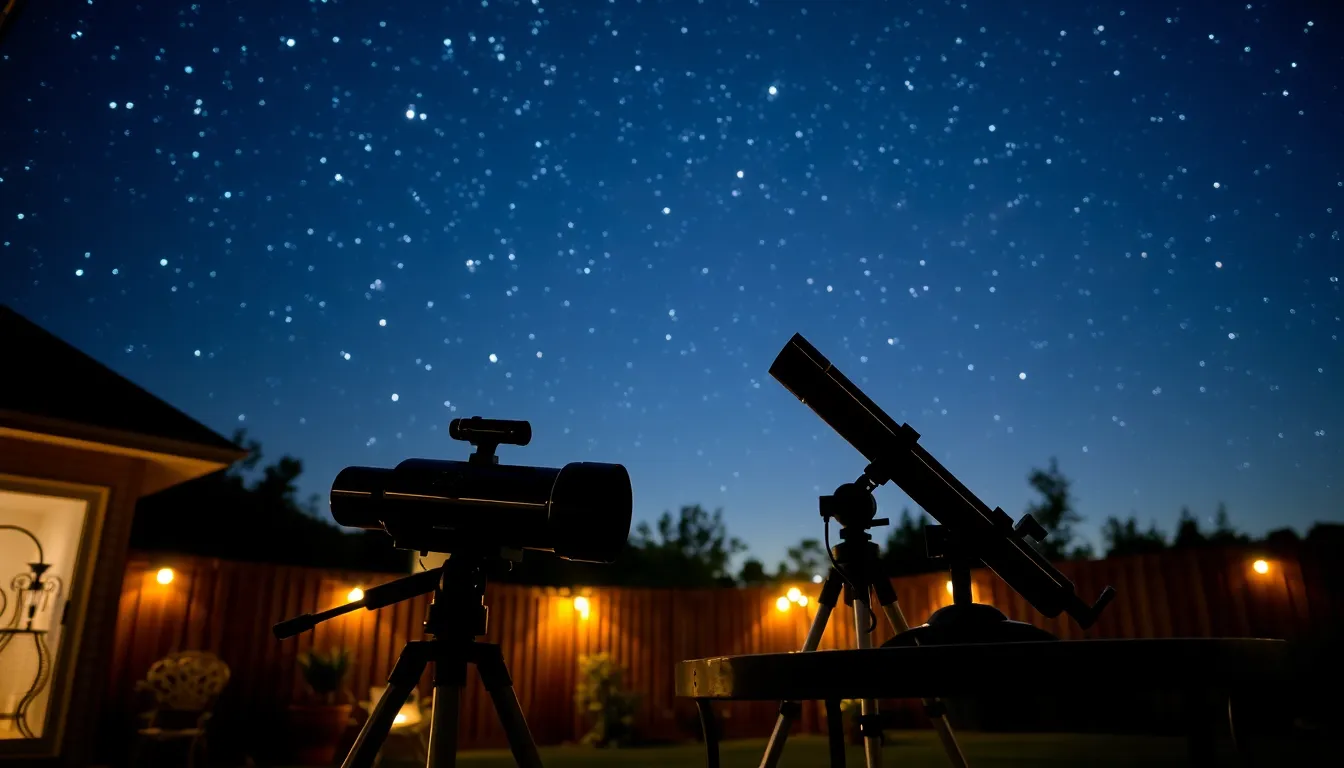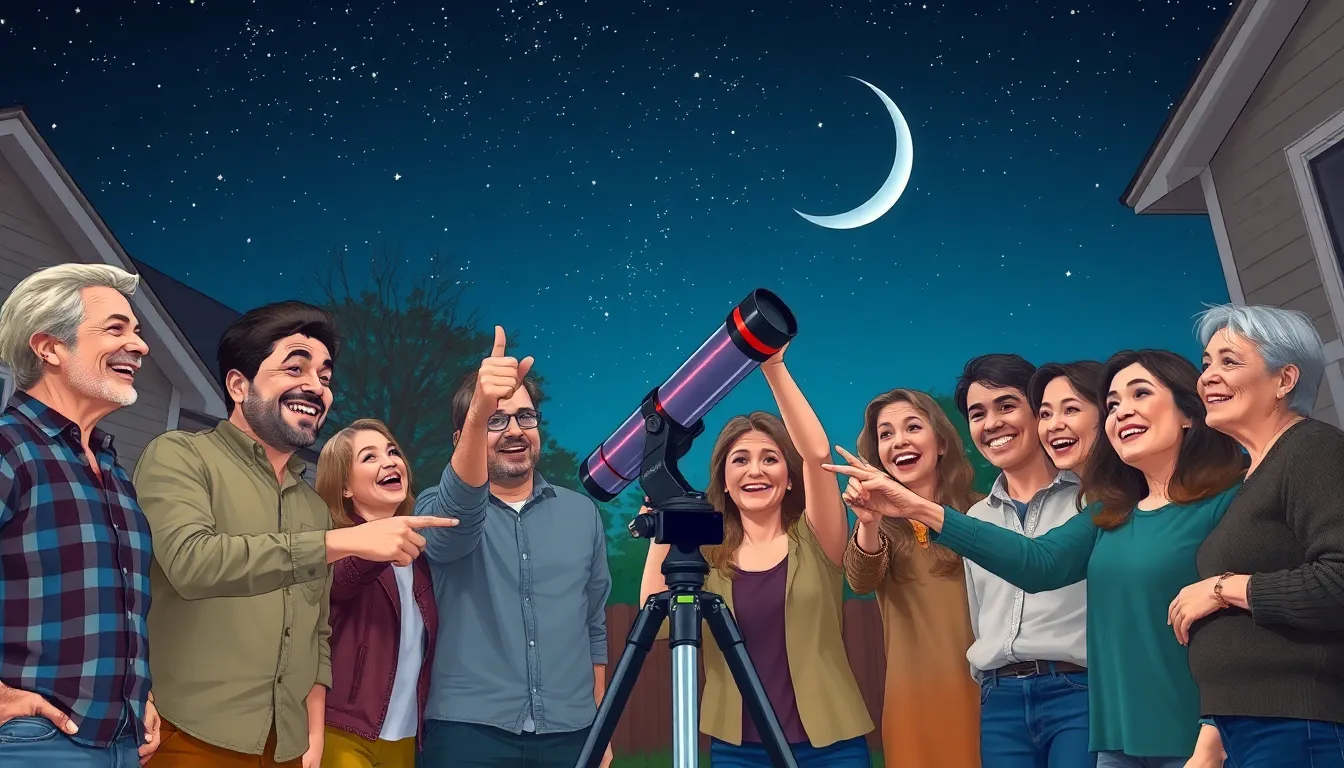Exploring the cosmos has never been more accessible, thanks to a wide range of telescopes available today. Whether someone’s a seasoned astronomer or just starting their celestial journey, understanding the right telescope can make all the difference. With so many options on the market, it’s easy to feel overwhelmed. This telescope buying guide aims to simplify the decision-making process. From understanding different types of telescopes to key features that enhance the stargazing experience, this guide will equip readers with the knowledge they need to choose the perfect telescope. By the end, they’ll be ready to embark on their astronomical adventures with confidence.
Telescope Buying Guide
Telescopes come in various types and possess key features that cater to different astronomical interests. Understanding these aspects aids in selecting the perfect telescope.Types of Telescopes
-
- Refractor Telescopes: Use lenses to focus light. These models deliver crisp images, making them ideal for planetary observation.
-
- Reflector Telescopes: Utilize mirrors for light collection. They excel in deep-sky viewing, providing bright images of distant celestial objects.
-
- Catadioptric Telescopes: Combine lenses and mirrors. These versatile telescopes offer portability and high-quality images, suitable for various viewing needs.
-
- Computerized Telescopes: Feature automated tracking systems. They simplify the stargazing experience, especially for beginners.
Key Features to Consider
-
- Aperture Size: Larger apertures capture more light, enhancing image quality and allowing observation of fainter objects.
-
- Mount Type: Choose between altazimuth or equatorial mounts. Each offers unique tracking capabilities and ease of use.
-
- Optical Quality: High-quality optics improve clarity and detail. Look for telescopes with fully coated lenses and mirrors.
-
- Portability: Consider the weight and size for easy transportation. Compact models are often better for casual observers.
Budget Considerations


Entry-Level Options
Entry-level telescopes typically range from $100 to $500. They offer sufficient capabilities for beginners, allowing for enjoyable stargazing experiences. Common types include basic refractor and small reflector telescopes, which provide decent optical performance without overwhelming users. For instance, a 70mm refractor can deliver clear lunar views and a 114mm reflector offers good deep-sky observation. Many entry-level models come with essential accessories, such as eyepieces and mounts, simplifying the initial investment. These telescopes balance affordability and quality, making them ideal for casual exploration.High-End Choices
High-end telescopes start around $1,000 and can exceed $5,000. These models are designed for serious astronomers seeking superior performance and advanced features. High-end options often include larger aperture sizes, ranging from 8 inches to over 14 inches, enhancing light-gathering capability. Opting for computerized models enables precise tracking of celestial objects, facilitating detailed observations. Notable choices include advanced catadioptric telescopes and large aperture reflector telescopes, which significantly improve image clarity and detail. Accessories and mounts in this price range further elevate the stargazing experience, making high-end telescopes worthwhile investments for dedicated enthusiasts.Choosing the Right Telescope
Selecting the appropriate telescope involves understanding specific needs and intended uses. Each user’s preferences and observational goals play crucial roles in this decision.Purpose and Usage
Astronomy’s diverse facets influence telescope choice. Planetary viewing requires high magnification and detail, favoring refractor models. Deep-sky observation benefits from larger aperture reflectors, capturing more light for clearer images of distant galaxies and nebulae. For casual stargazing or educational purposes, entry-level models suffice, allowing beginners to familiarize themselves with celestial objects. Those interested in astrophotography should consider models featuring stable mounts and advanced optics, accommodating camera attachments to capture stunning images. Assessing personal interests in planetary, lunar, or deep-sky observation assists in selecting the ideal telescope for satisfying experiences.Portability and Size
Portability significantly impacts a telescope’s practicality. Lightweight models, such as small refractors and compact reflectors, allow easy transport for stargazing away from urban light pollution. These options suit hikers and travelers, ensuring seamless setup in various locations. Conversely, larger telescopes often deliver superior viewing experiences but can be cumbersome and require more setup time. Consider storage space when choosing a telescope; compact designs prioritize convenience, while larger models excel in providing detailed observations. Assessing personal mobility needs aids in selecting a telescope balanced between performance and portability.Accessories and Add-Ons
Accessories and add-ons enhance the telescope experience, making stargazing more enjoyable and efficient. Proper items can improve observations and broaden the scope of astronomical pursuits.Essential Accessories
Essential accessories include items necessary for optimizing telescope performance.-
- Eyepieces: Various focal lengths provide different magnifications, allowing for detailed views of celestial objects.
-
- Star Charts: Help navigate the night sky and locate constellations and planets.
-
- Filters: Color filters enhance contrast and reduce glare, improving visibility of specific celestial features.
-
- Finder Scopes: Assist in locating objects quickly by providing a wider field of view than the main telescope.
Optional Enhancements
Optional enhancements can elevate the telescope experience for avid astronomers.-
- Batteries: Portable power sources ensure uninterrupted use for computerized telescopes during extended sessions.
-
- Dew Shields: Prevent dewy conditions from obstructing the lens and maintain clear visibility.
-
- Mounting Upgrades: Advanced mounts improve tracking capabilities and stability for astrophotography.
-
- Camera Adapters: Allow users to attach smartphones or cameras for capturing images of celestial events.














